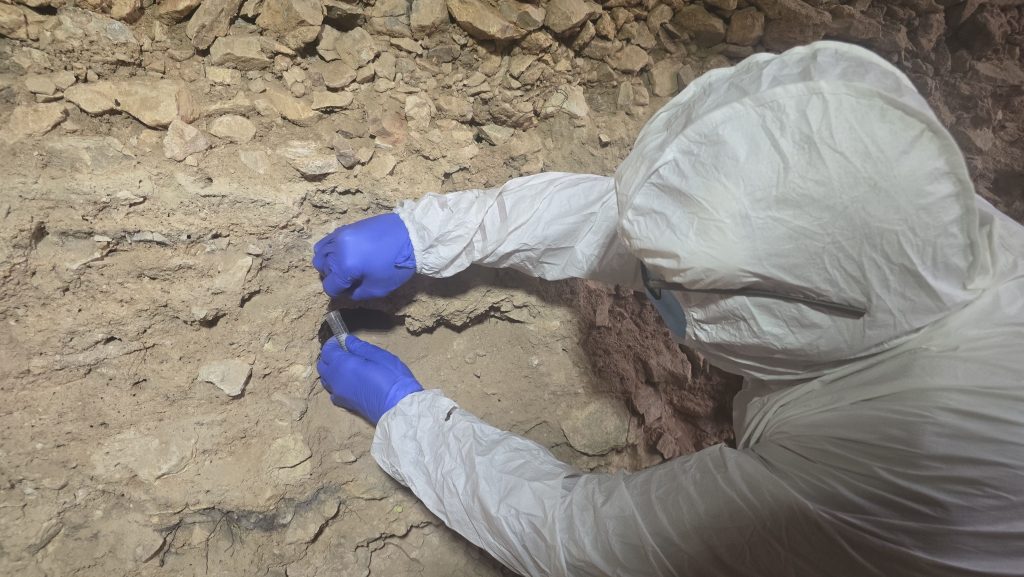(Zaragoza, Wednesday, September 4, 2024). Archaeological work began over a decade ago at the AGP5 cave, located in the municipality of Aguilón, in the province of Zaragoza. The first archaeological remains were discovered in 2010, and since then, successive excavation campaigns have focused on the outermost area of the cave. Up until this summer’s campaign, approximately 10,000 lithic and animal bone remains have been recovered, along with a significant number of combustion structures (hearths), indicating moments of intense occupation of the cave by Neanderthal groups.

The lithic remains, particularly points, scrapers, notches, and denticulates, were almost entirely made from locally sourced flint of excellent quality. Based on their typology, these artifacts are attributed to the Mousterian industry (Middle Paleolithic), which was crafted by Neanderthal peoples. This attribution is supported by absolute dating results, placing the cave’s occupation between 42,000 and 45,000 years ago.
This year’s campaign, led by Carlos Mazo and Marta Alcolea, professors at the University of Zaragoza and members of the Aragón Environmental Science Research Institute (IUCA), collected sediment samples in an attempt to recover ancient DNA, in addition to the usual samples. This brings paleogenetics into the wide range of disciplines used to study the remains at this site, including sedimentological, geoarchaeological, archaeopetrological, traceological, zooarchaeological, archaeobotanical, and archaeometric analyses.

The sediment sample collection was carried out by ancient DNA expert Pere Bover, an ARAID researcher and head of the ancient DNA laboratory at IUCA. These archaeological efforts also involved researchers Cristina López, Marina Bretos, and Alicia Sanz, affiliated with the research group First Settlers and Archaeological Heritage of the Ebro Valley (P3A), as well as students and graduates from the History degree program at the University of Zaragoza.
As in previous years, in collaboration with the Amigos x Aguilón association, an open day was held where numerous visitors had the opportunity to observe the various tasks involved in an archaeological excavation. Visitors were informed about the ongoing work and the results obtained, which have been presented at numerous national and international forums.
One of the last refuges for Neanderthals in the Iberian Range
The AGP5 cave is of particular interest because it may provide insights into the last presence of Neanderthal groups in the Iberian Range. Its chronology places it at a pivotal moment in European history, marked by both cultural and biological shifts: the transition from the Middle Paleolithic to the Upper Paleolithic, with the replacement of Neanderthals by anatomically modern humans.

